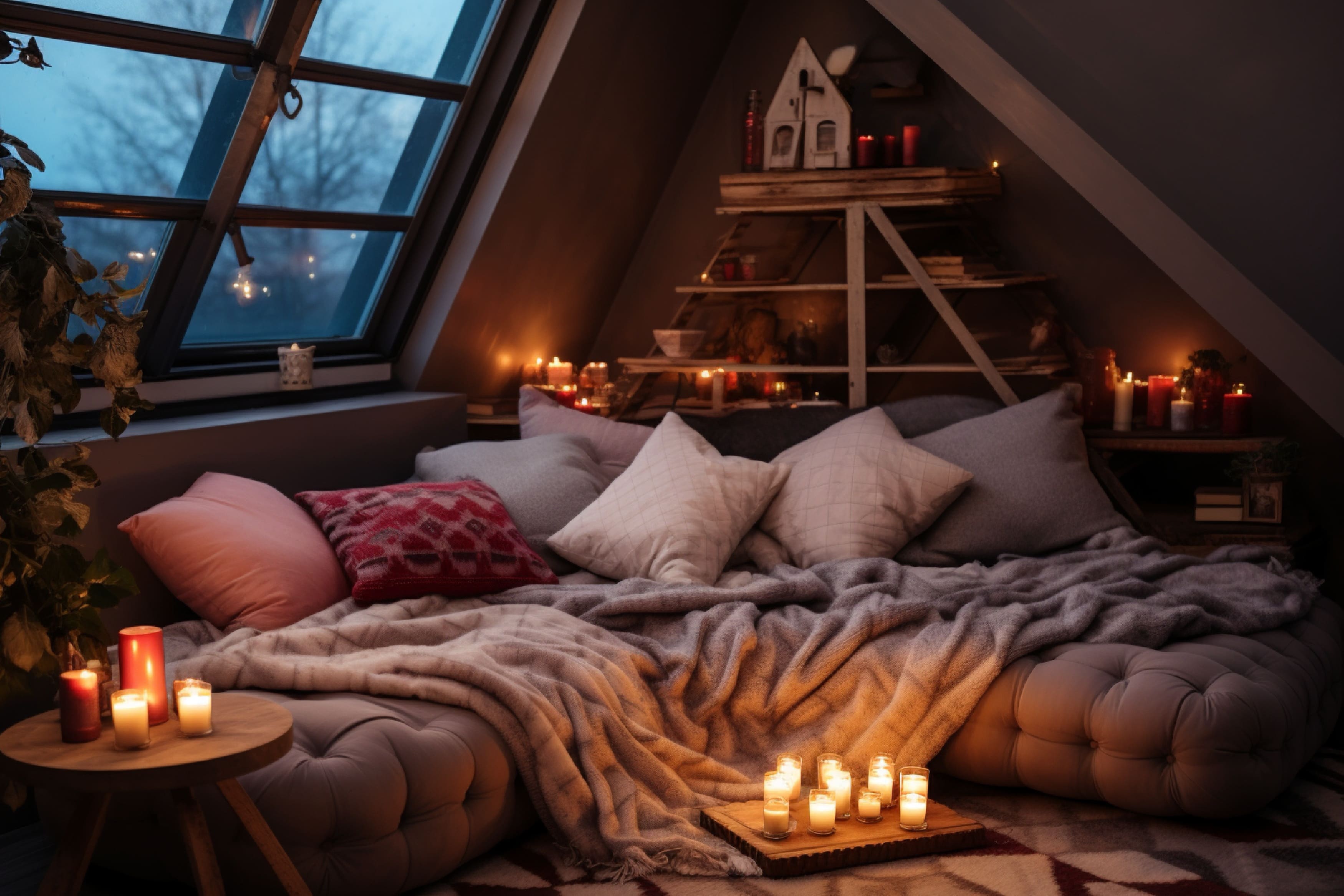Step into a time machine and journey back to the past!
Today we’re visiting the 1950s, 1960s, and 1970s, where interior design was a reflection of the changing times and cultural shifts. These iconic periods witnessed a whirlwind of styles, each with its unique charm and character. From the mid-century modern delight of the fabulous 1950s to the groovy mod and psychedelic vibes of the 1960s, and finally, the eclectic fusion of bohemian and disco in the 1970s, these eras left an indelible mark on interior design. Join us as we delve into the past and explore the captivating interior styles that continue to inspire us to this day.
- The Fabulous 1950s: Mid-Century Modern Delight
In the 1950s, mid-century modern design was brought into the limelight. The color palette reflected the optimism of the post-war era, with vibrant and pastel hues stealing the spotlight. The prosperity of the post-war world allowed for interior design to blossom – and blossom it did.
Embrace a mix of vibrant and pastel hues. Think bold shades like teal, orange, and chartreuse, along with softer colors like mint green, blush pink, and baby blue. White and black provide a classic contrast to these bright colors. Turquoise, coral, and buttery yellows adorned the walls, while clean lines and organic shapes defined the furniture.
Furniture in the 1950s featured sleek and streamlined silhouettes. Sofas, chairs, and tables had slender, straight legs or tapered peg legs. The aim was to create an airy and uncluttered aesthetic that blended seamlessly with the overall interior design. Iconic pieces like the Eames Lounge Chair and the Noguchi Coffee Table became staples in homes, combining functionality with sleek design. You can expect to see teak sideboards and of course, one can’t forget the quintessential boomerang-shaped coffee table.
For a touch of glamor to the space, pieces such as starburst clocks and sunburst mirrors were added to many homes. Opt for colorful, abstract artwork that captures the spirit of the era.
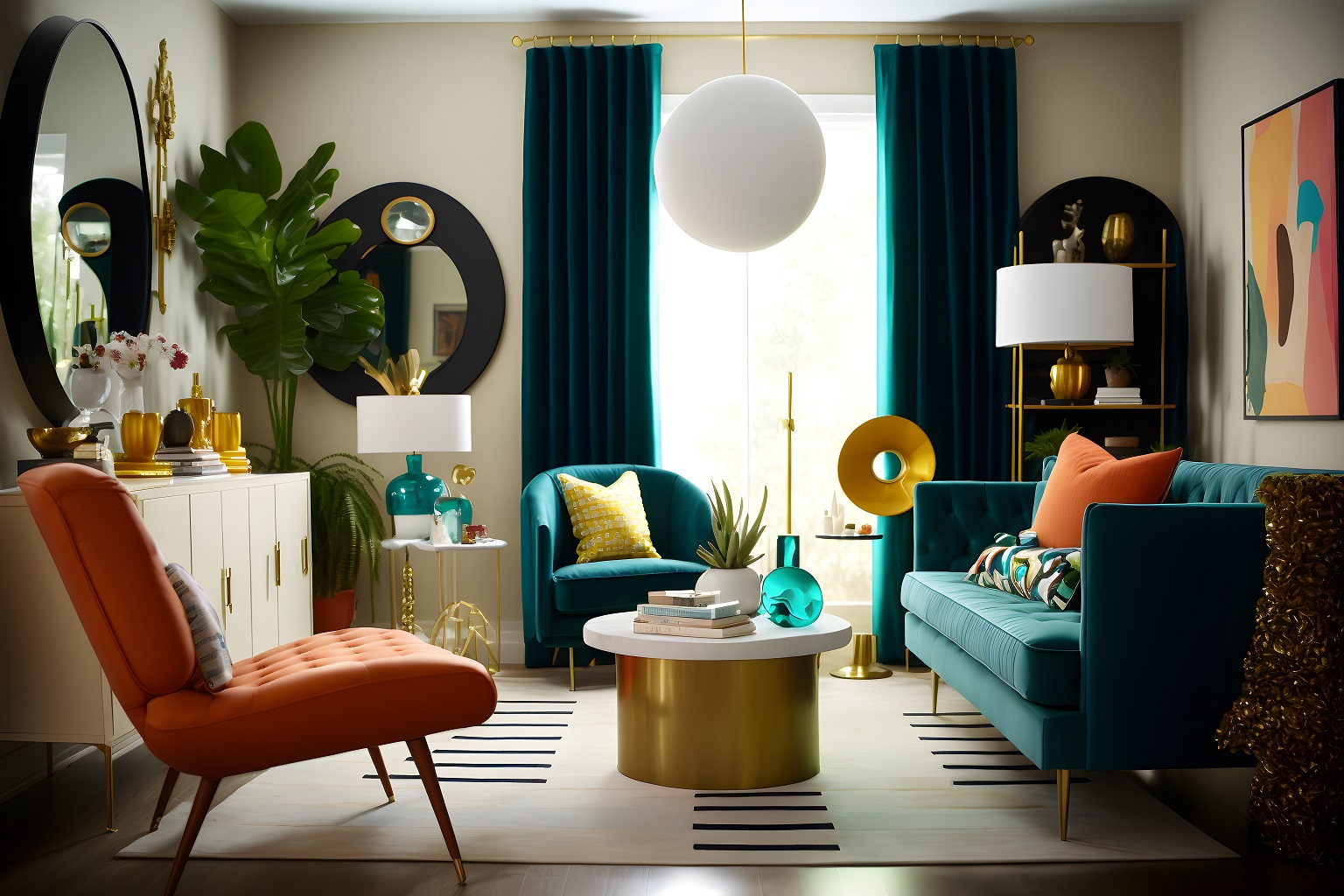
If we’re talking 50’s, we have to talk about their iconic kitchens. It’s hard to imagine a kitchen with fewer technological appliances than today (they didn’t even have a dishwasher back then!), but the economic growth after the Second World War had led to a boom in suburban living and the rise of the modern kitchen as we know it. This is definitely a topic that has to be explored.
The 1950s kitchen was known for its cheerful and vibrant color schemes, with colorful pastel kitchen cabinets and appliances. Chrome accents and Formica countertops were key features of 1950s kitchens. Chrome was used for cabinet handles, knobs, and table legs, adding a touch of shine and reflecting the era’s fascination with the Space Age and futuristic designs. Formica, a durable and easy-to-clean laminate material, was a popular choice for countertops, often featuring colorful patterns and designs.
The 1950s embraced playful patterns and accessories in kitchen design. Checkered or polka dot patterns were commonly used for curtains, tablecloths, and dishware. Kitchen utensils, such as colorful mixing bowls, vintage bread boxes, and canister sets, added a nostalgic touch to the space.
1950s kitchens were often designed with a family-friendly layout in mind. The open-plan concept became more prevalent, connecting the kitchen with adjacent dining or living areas. This layout allowed for easier interaction between family members and a more inclusive cooking experience. Many of them featured breakfast nooks, a dedicated space for informal dining known as a breakfast nook. These cozy corners typically included built-in benches or booths with colorful cushions and a small table. Breakfast nooks provided a casual gathering spot for family meals and became a popular feature in suburban homes.
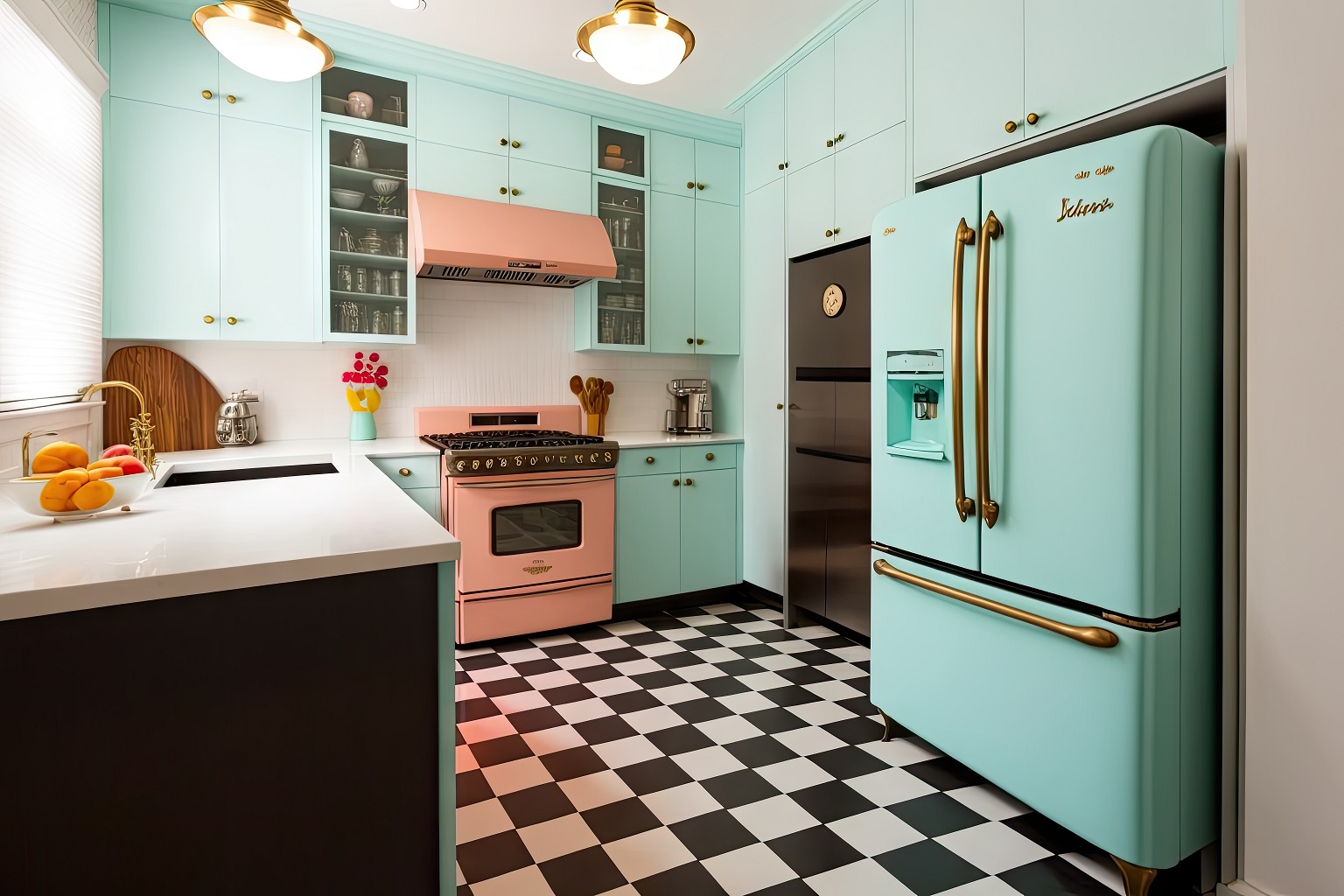
The 1950s exuded a sense of sophistication and timeless elegance that continues to inspire interior design to this day.
- The Groovy 1960s: Mod and Psychedelic
The 1960s ushered in a cultural revolution, and interior design reflected the spirit of change. Hippie ideals and the desire for communal living spaces challenged the conventional notions of home design. The emphasis shifted towards creating spaces that fostered a sense of harmony, connection with nature, and individuality.
Colors exploded with boldness and experimentation, capturing the essence of the mod and psychedelic movements. Vibrant hues of orange, electric blue, and lime green energized the space, often paired with contrasting neutrals such as white, black, and gray. This is the time to have fun with colors!
Another thing to love about the 60s is the iconic Pop Art movement. Pop Art celebrated popular culture, consumerism, and mass media, and its impact extended to interior design. Vibrant and bold colors became popular choices for interiors, and abstract patterns and graphic motifs found their way onto furniture, wallpapers, and accessories. The concept of “art for everyone” was embraced, blurring the lines between fine art and everyday objects. Geometrical patterns, specifically, were huge during the 60’s! Geometric tiles are part of what gives old homes that distinct retro feel. Patterns and textures became a defining feature, from shag rugs to the previously mentioned bold geometric prints.
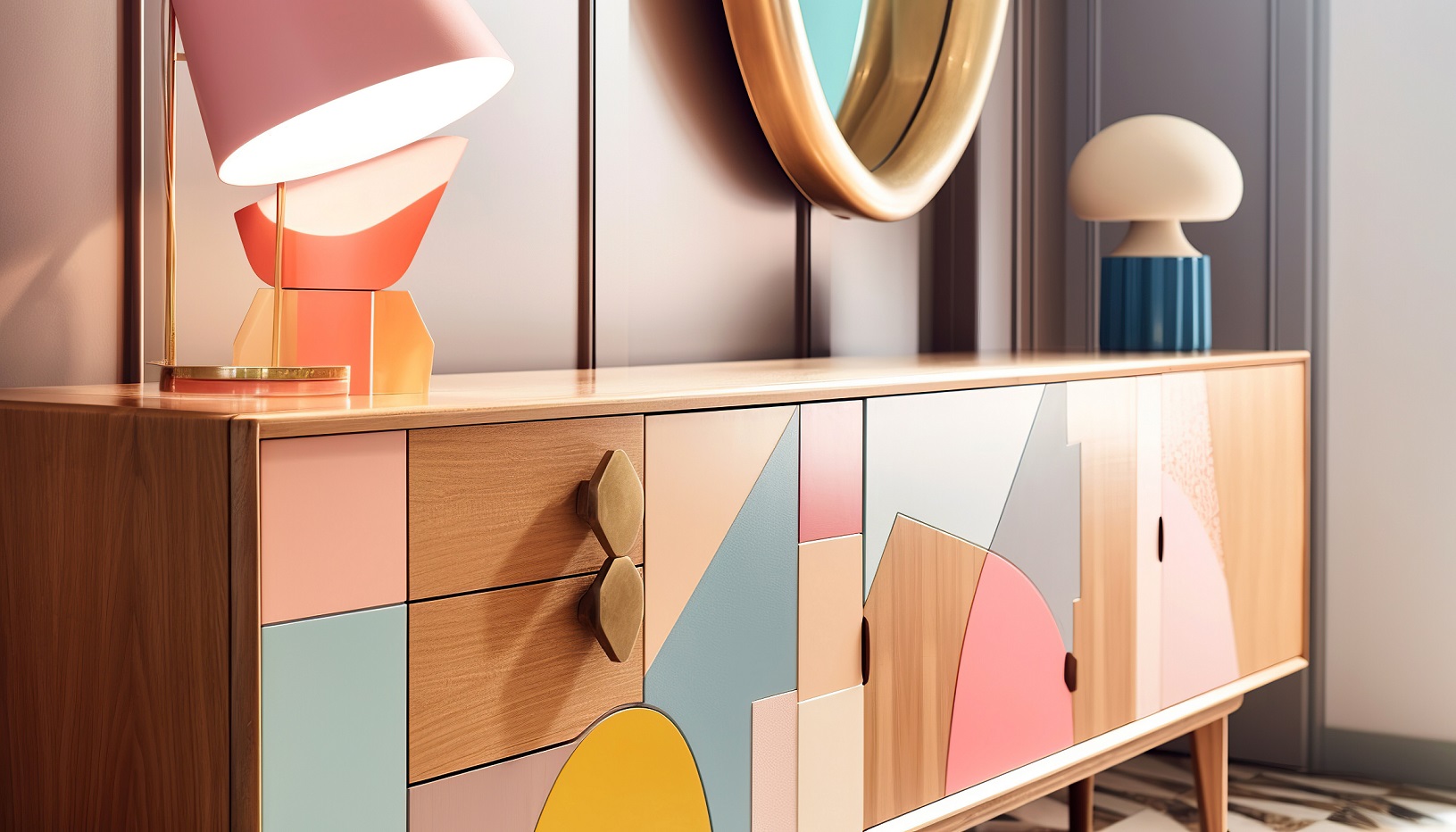
The 1960s also witnessed advancements in technology and material innovation, which affected interior design. Space-age influences and futuristic designs became prevalent, with the use of materials like plastic, molded fiberglass, and acrylic. Furniture design embraced futuristic and unconventional shapes, with iconic pieces like the egg chair and the bubble chair taking the spotlight. Another piece of furniture that made its debut during the 60s was the ever-prominent bookshelf. Custom built bookshelves that filled walls from floor to ceiling popped up in living rooms everywhere. Think big, oversized and eye-catching. These were often used as focal points for the entire living room!
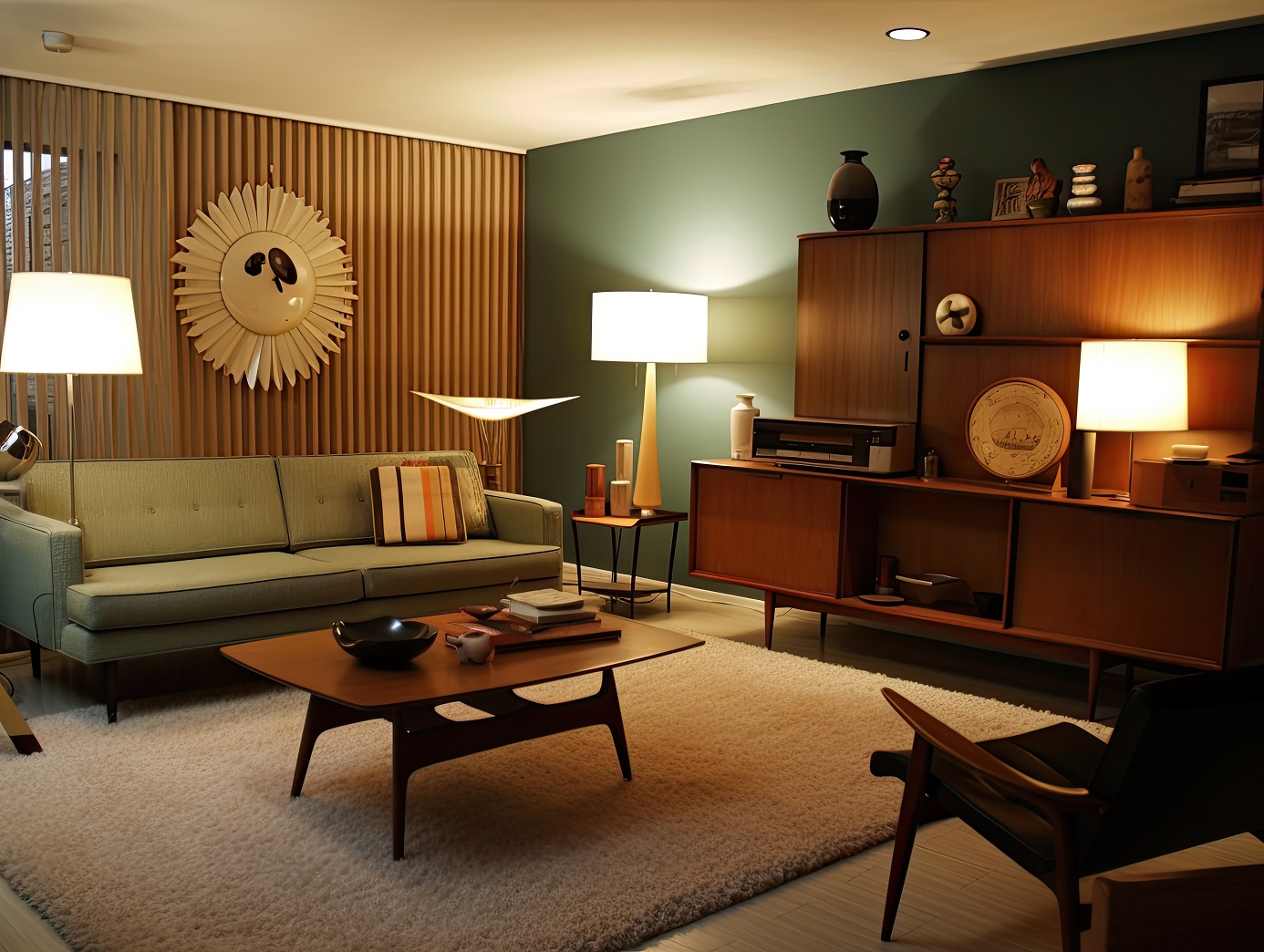
Now, let’s talk light. As mentioned previously, the 1960s witnessed advancements in materials and manufacturing techniques. These innovations allowed designers to explore new possibilities in lamp design. The availability of new materials, such as plastic and fiberglass, along with advancements in lighting technology, provided designers with greater creative freedom to experiment with shapes, textures, and lighting effects.
Tripod floor lamps became a stylish addition to living rooms and reading corners in the 1960s. These lamps typically consisted of a three-legged base with an adjustable lampshade, allowing for directional lighting. The tripod design added a sense of visual interest and stability to the overall aesthetic.
Mushroom-shaped lamps were a distinctive design trend of the 1960s. These lamps featured a rounded cap and a slender stem, resembling the silhouette of a mushroom. Often made from colorful plastic or glass, they emitted a soft, diffused light that added a touch of whimsy to interior spaces.
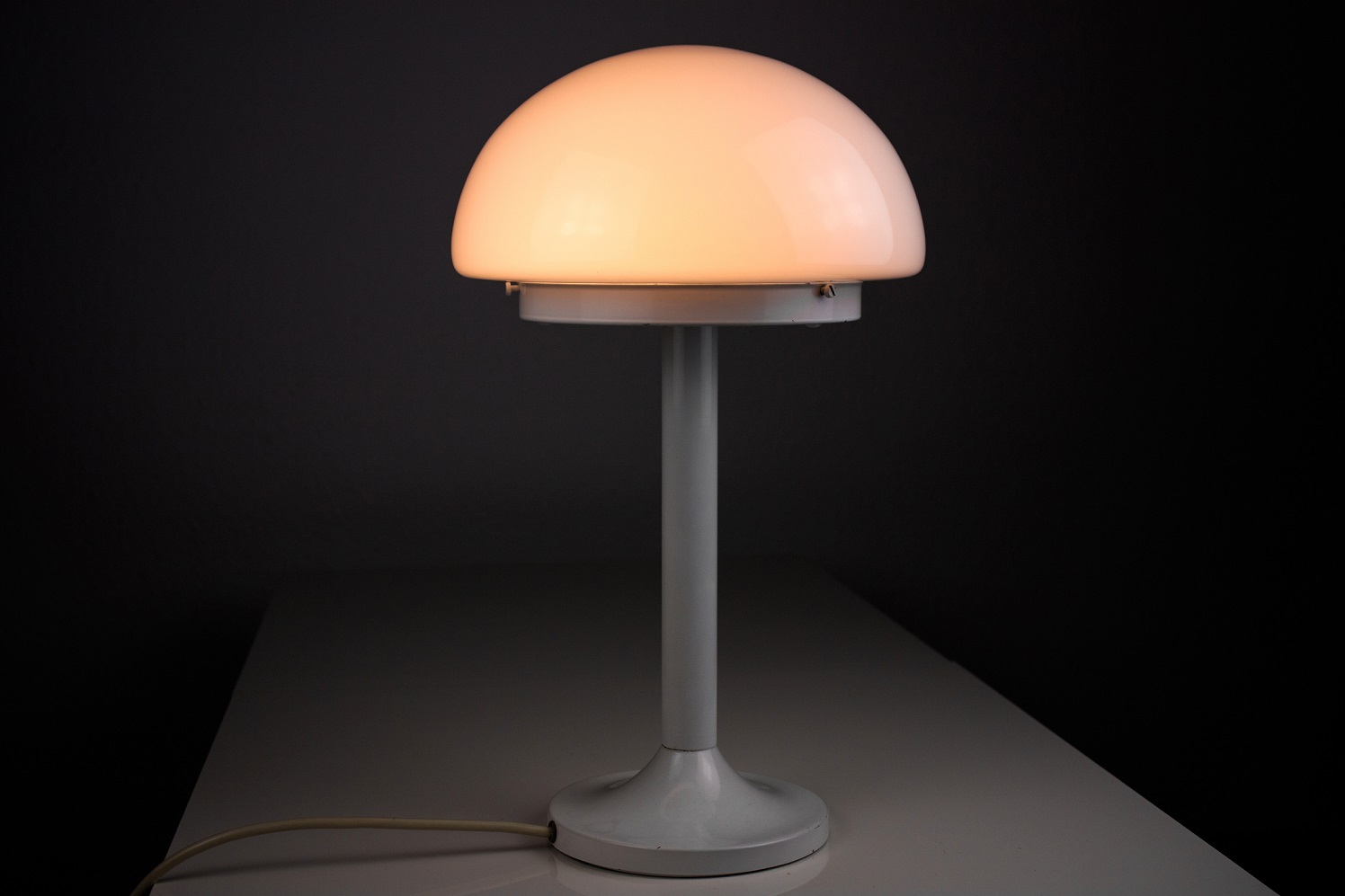
The 1960s brought a sense of whimsy and optimism into interiors, inviting individuals to embrace their creativity and expressiveness.
- The Eclectic 1970s: Bohemian and Disco Vibes
The 1970s witnessed a fusion of styles, combining bohemian influences with disco glam. It was a decade of self-expression, freedom, and individuality. Embrace the bohemian spirit and disco fever of the era through your interior design choices.
Earthy tones and rich jewel hues dominated the color palette, creating warm and inviting spaces. Browns, oranges, mustard yellows, and avocado greens evoked a sense of nature and laid-back vibes.
Try to incorporate natural materials such as rattan, macramé, and wicker in your furniture to achieve a boho chic vibe. Don’t shy away from incorporating mirrored surfaces, bold prints, and statement lighting fixtures to add a touch of disco glam to your space.
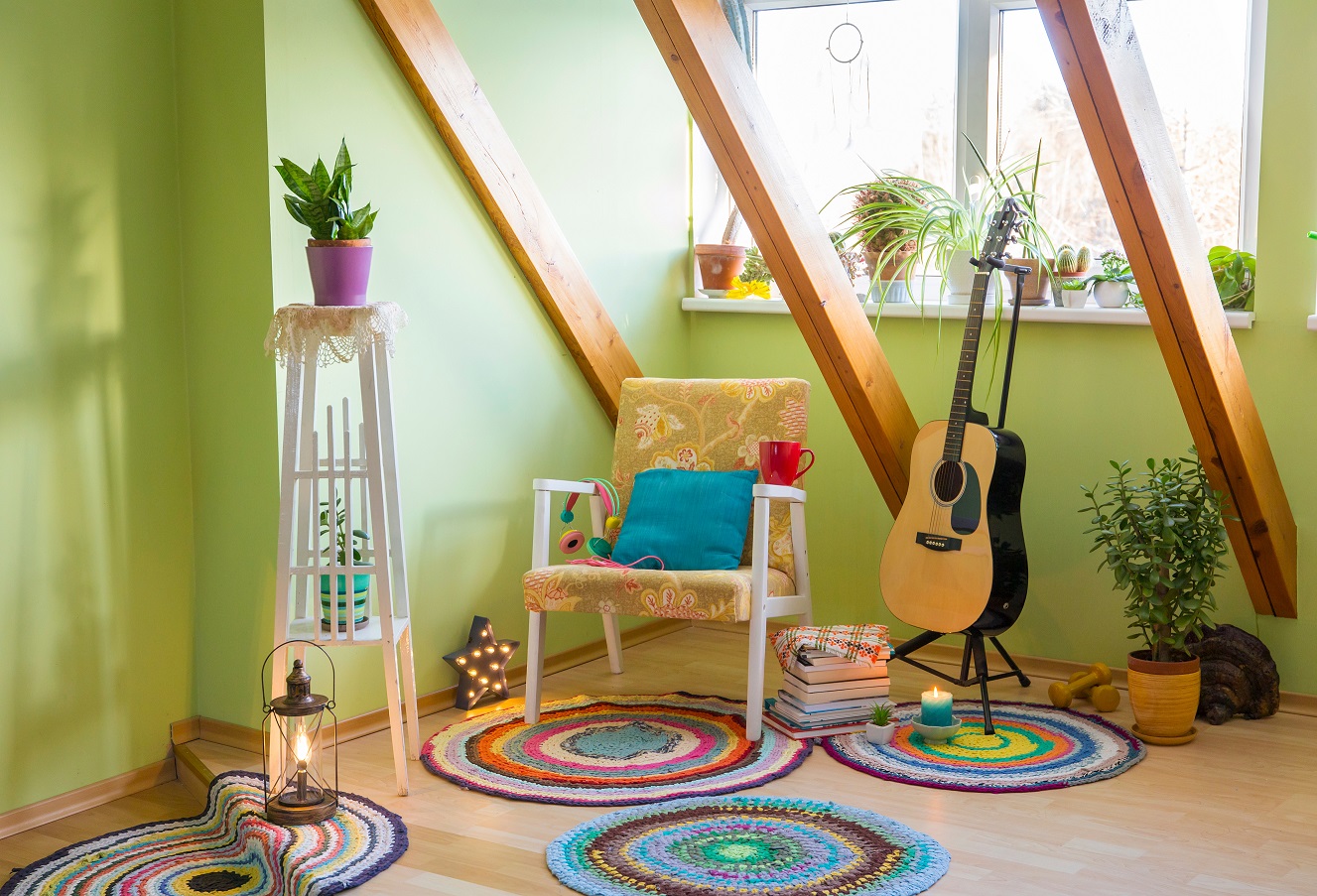
During this era, furniture design embraced comfort and relaxation, with plush sofas, oversized armchairs, and hanging chairs making a statement. As disco music took the world by storm, mirrored surfaces, metallic accents, and vibrant patterns became focal points.
Speaking of vibrant patterns, flowers were all the rage in the 70s! Try to incorporate flower references in your textiles, artworks and wallpaper. Bricks and tiles were another big hit during the 70’s, with big fireplaces often being the focal point of the living room.
The 1970s celebrated individuality and self-expression, inviting people to create homes that were eclectic and vibrant. Are you ready to disco?
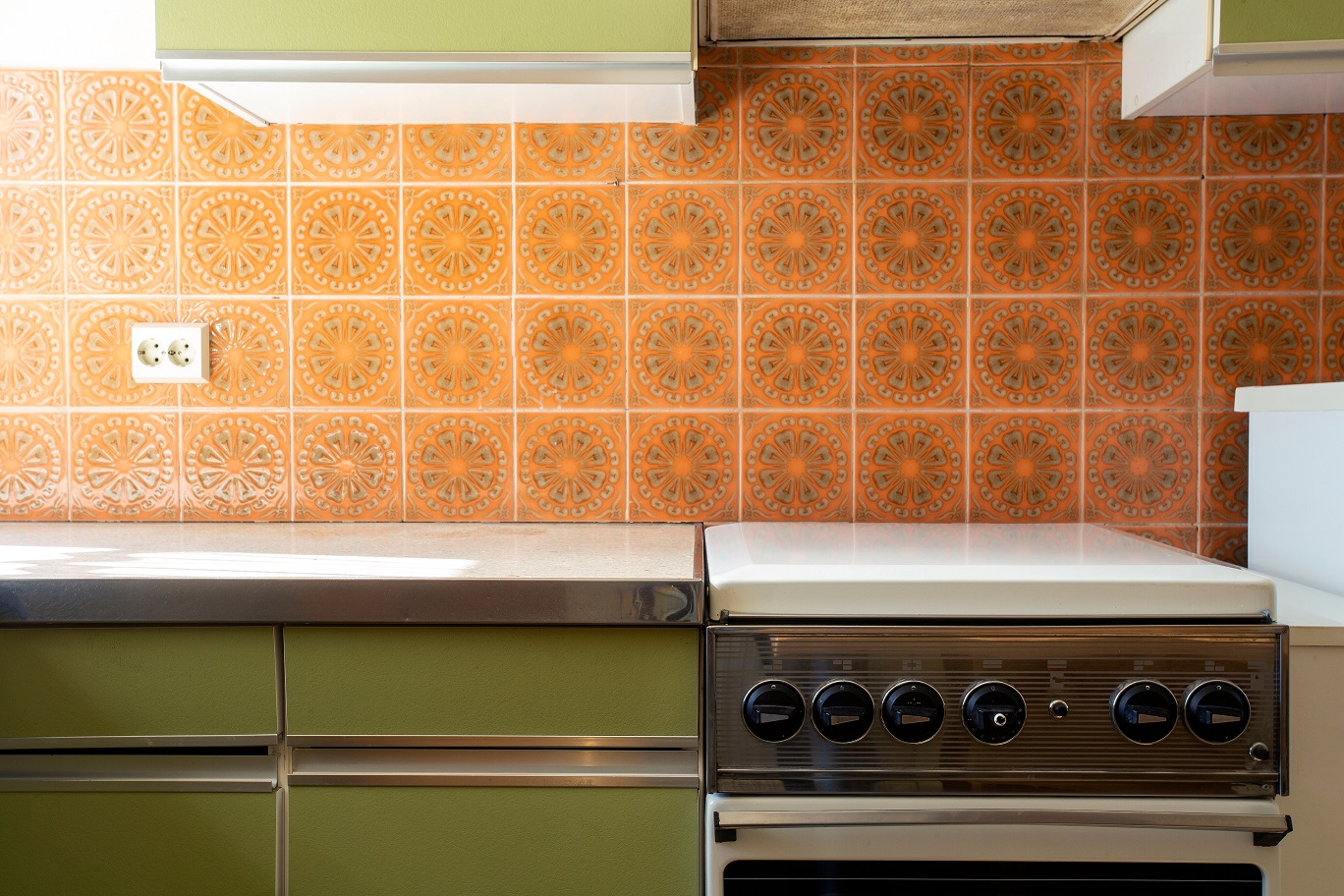
As we conclude our journey through the interior styles of the 1950s, 1960s, and 1970s, it becomes evident that these decades were not merely chapters in history, but artistic expressions of their times. The mid-century modern elegance, the vibrant mod and psychedelic revolution, and the bohemian disco fusion all served as outlets for self-expression, creativity, and the desire for change. While the trends may have evolved, their influence continues to resonate in contemporary design. So, whether you find inspiration in the sleek lines of mid-century furniture, the bold colors and patterns of the mod era, or the bohemian spirit and disco fever of the 1970s, these timeless styles invite you to infuse your own spaces with a touch of nostalgia and flair. Let the past be your muse as you create interiors that are uniquely yours while paying homage to the captivating designs of yesteryears.















